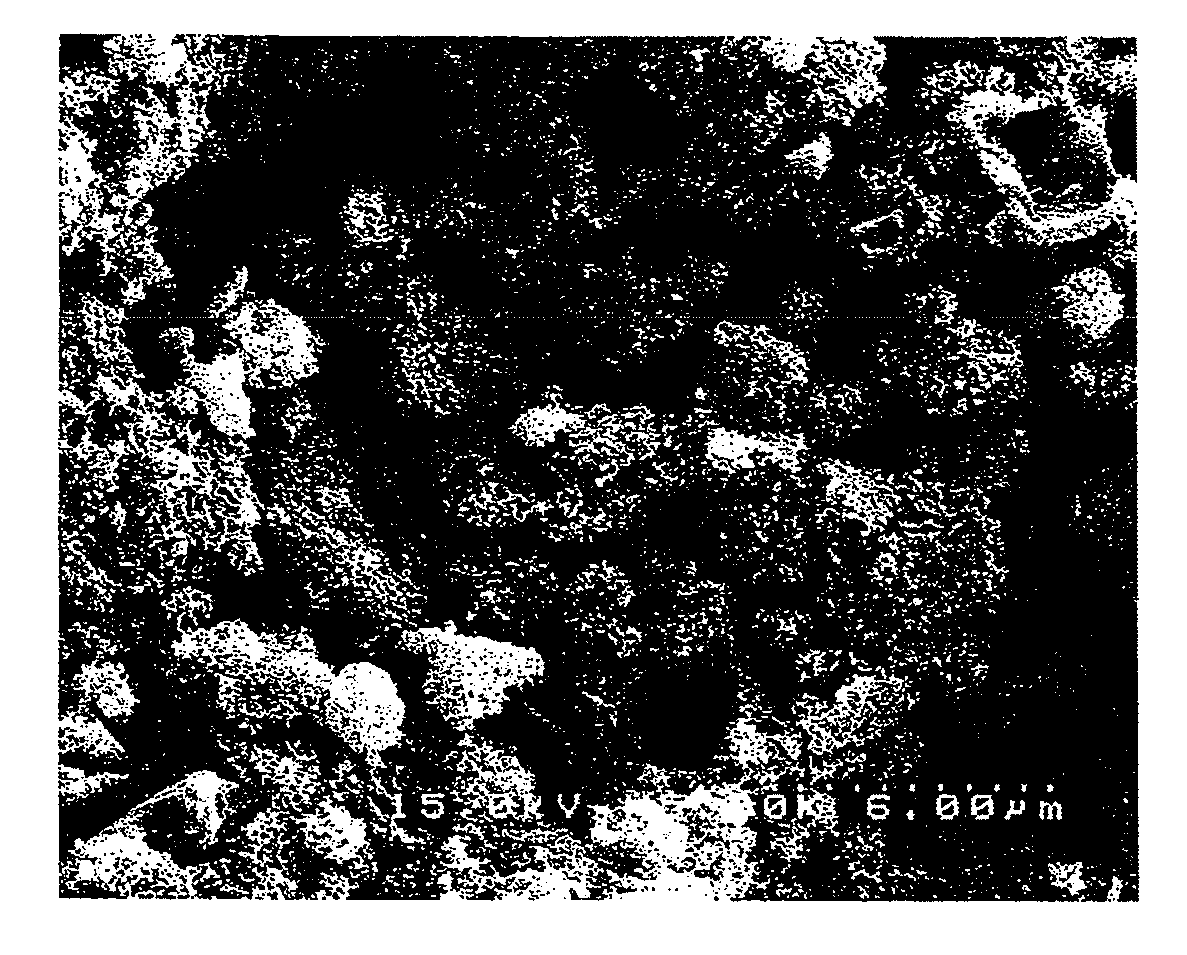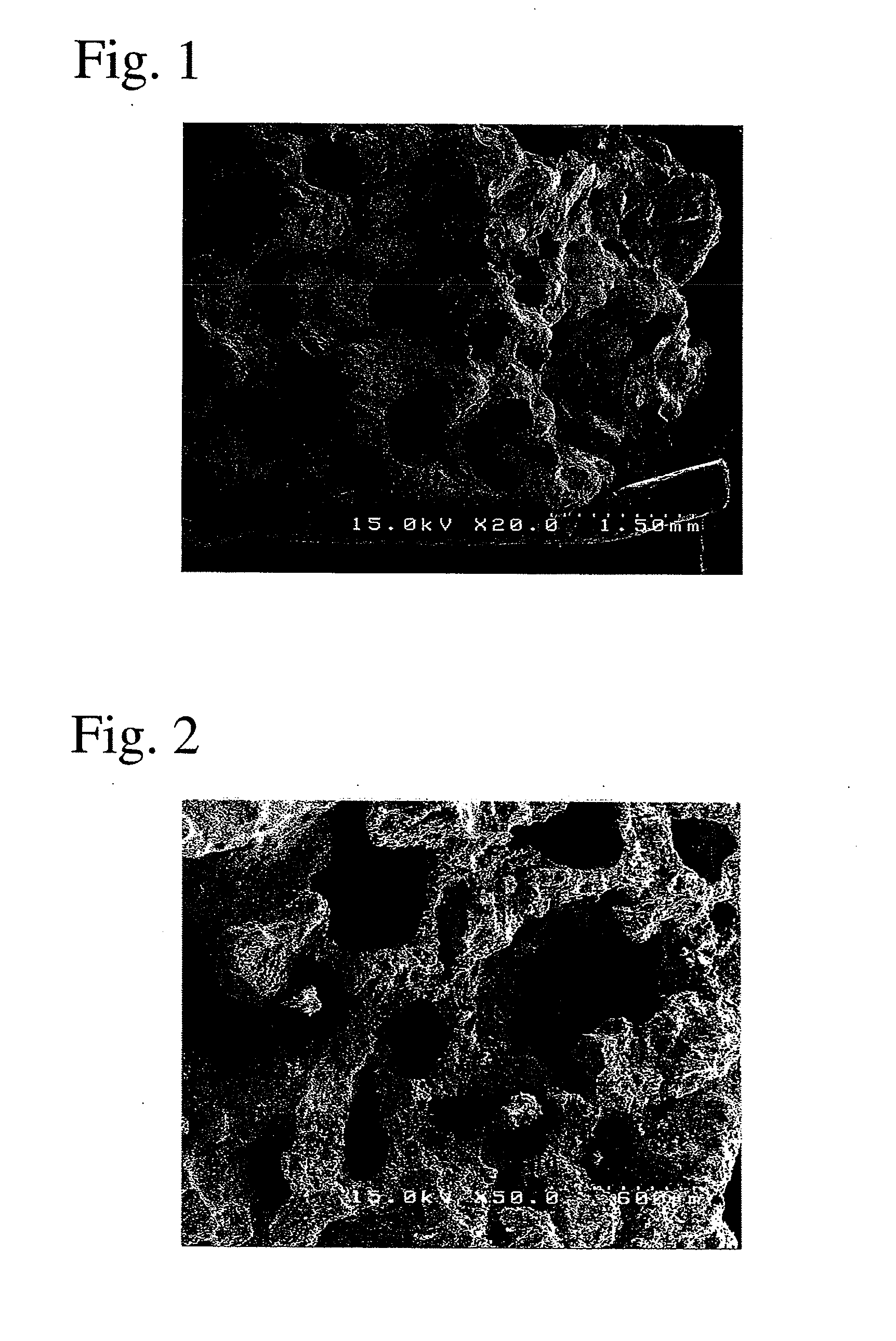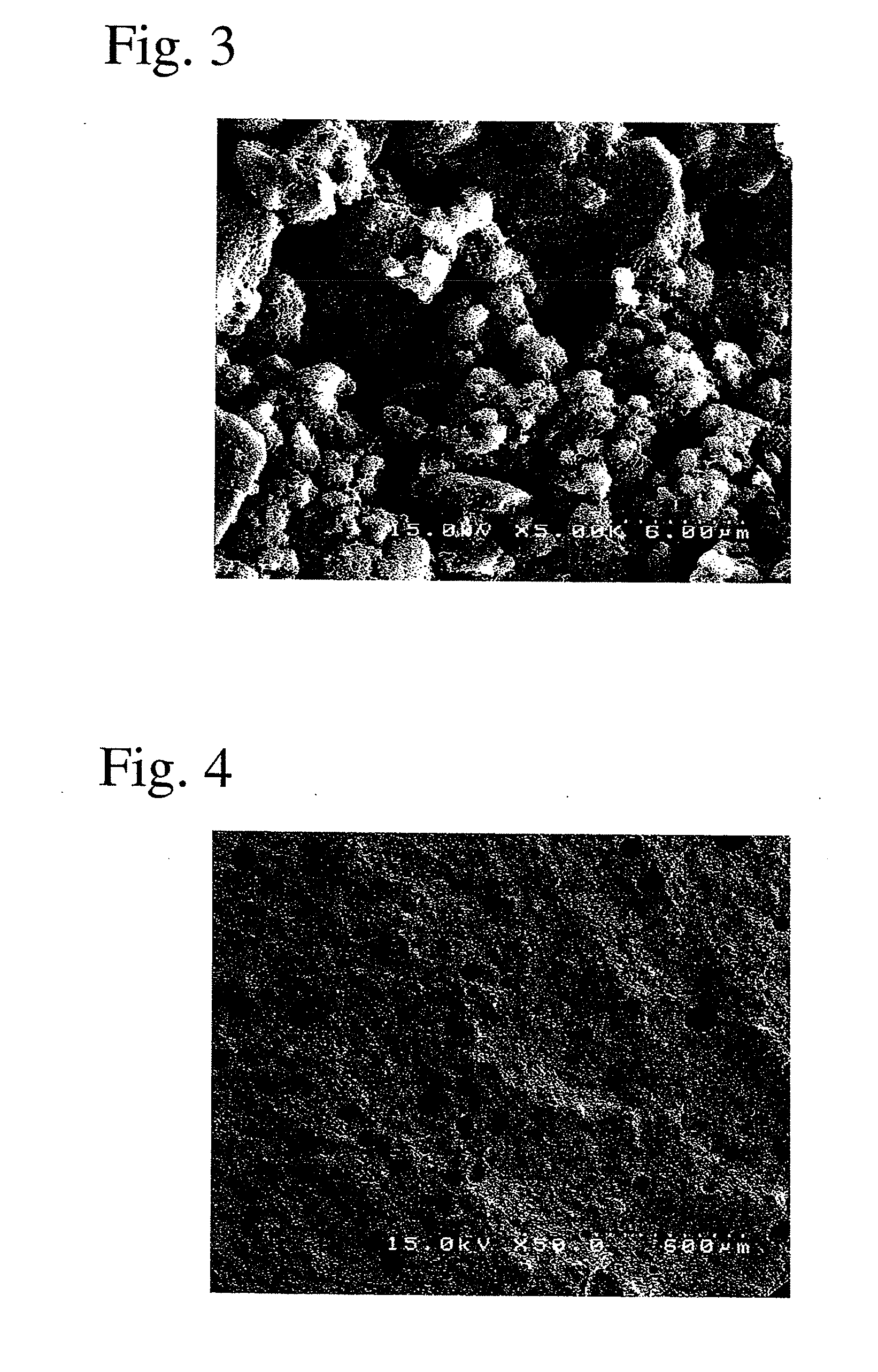Calcium phosphate cement composition and its kit for bone prosthesis
a calcium phosphate cement and composition technology, applied in the field of calcium phosphate cement composition for bone prosthesis, can solve the problems of insufficient decomposition speed in a living body, high crystallinity, and insufficient ability of hardened calcium phosphate cement to be absorbed and substituted with autogenous bones, and achieve excellent ability of absorbing and substituting.
- Summary
- Abstract
- Description
- Claims
- Application Information
AI Technical Summary
Benefits of technology
Problems solved by technology
Method used
Image
Examples
example 1
[0080](1) Production of Fibrous Apatite / Collagen Composite
[0081]412 g of an aqueous collagen solution containing phosphoric acid (0.97% by mass of collagen, and 20 mM of phosphoric acid) was added to 400 ml of a 120-mM aqueous phosphoric acid solution, and stirred to obtain a solution I. 400 ml of a 400-mM calcium hydroxide solution (solution II) was also prepared. Both solutions I and II were simultaneously dropped at a speed of 30 mL / min into a vessel containing 200 ml of water (25° C.), to obtain a slurry containing a fibrous apatite / collagen composite. The reaction solution was stirred at 200 rpm during dropping. The reaction solution had pH of 8.9-9.1 during dropping.
[0082](2) Production of Powdery Apatite / Collagen Composite
[0083]The slurry was mixed with water to a water content of 95% by volume, to prepare a suspension of the fibrous apatite / collagen composite. This suspension was sprayed into liquid nitrogen by a spray drier, freeze-dried, and then cross-linked by a thermal ...
example 2
[0087]A hardened calcium phosphate / collagen composite was produced in the same manner as in Example 1, except for using no sodium hydrogen carbonate and no citric acid. The scanning electron photomicrographs of the hardened calcium phosphate / collagen composite are shown in FIGS. 4 and 5. This hardened calcium phosphate / collagen composite had porosity of 60%, with a structure in which the powdery apatite / collagen composite was bonded by hydroxyapatite formed by the reaction of the calcium phosphate powder.
example 3
[0088]A hardened, porous calcium phosphate / collagen composite was produced in the same manner as Example 1, except that the amount of sodium chondroitin sulfate was 10% by mass. A paste-like mixture formed by the powdery agent and the aqueous blending liquid was highly viscous, and hardened while being foamed after 10 minutes. The resultant hardened, porous calcium phosphate / collagen composite had a large number of communicating pores, with porosity of 90%.
PUM
| Property | Measurement | Unit |
|---|---|---|
| Fraction | aaaaa | aaaaa |
| Percent by mass | aaaaa | aaaaa |
| Percent by mass | aaaaa | aaaaa |
Abstract
Description
Claims
Application Information
 Login to View More
Login to View More - R&D
- Intellectual Property
- Life Sciences
- Materials
- Tech Scout
- Unparalleled Data Quality
- Higher Quality Content
- 60% Fewer Hallucinations
Browse by: Latest US Patents, China's latest patents, Technical Efficacy Thesaurus, Application Domain, Technology Topic, Popular Technical Reports.
© 2025 PatSnap. All rights reserved.Legal|Privacy policy|Modern Slavery Act Transparency Statement|Sitemap|About US| Contact US: help@patsnap.com



